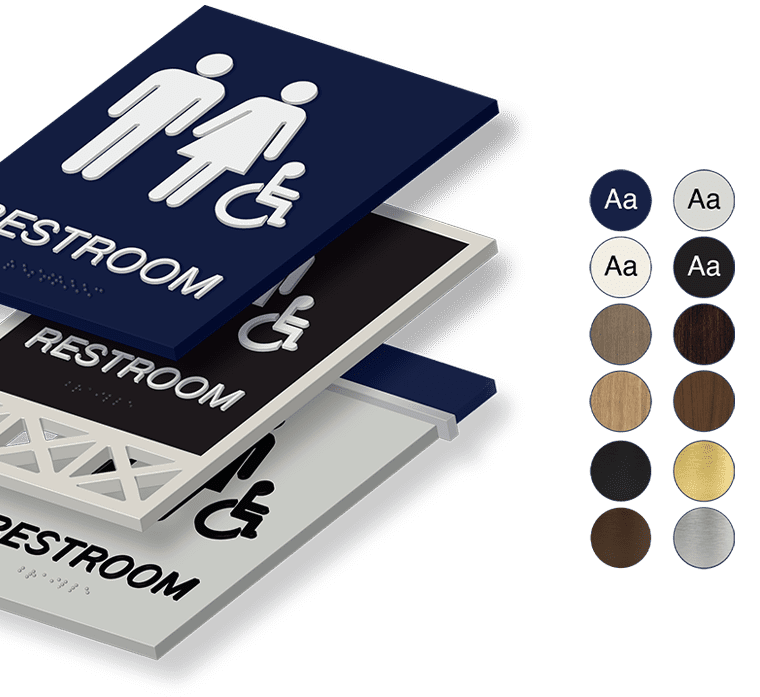History of ADA Signage

If you’re involved in the running of any business, you should be well aware of the Americans with Disabilities Act (ADA) and the importance it plays in your daily operations. This can include everything from making sure all doors are wide enough to accommodate wheelchairs, implementing wheelchair-accessible restrooms, to ordering ADA signs to be displayed around your store or office building. While you may already have some idea about this law, you might not know about the history of ADA signage and why it’s so important today.
What is ADA Signage?
ADA signage promotes, informs, and advertises disability accessibility in facilities, services, and programs. It falls into two primary types of public signs: in the first case, they provide information about public buildings and activities; in the second case, they provide directions. In virtually every business you visit, you’ll see ADA signage since the ADA mandates signs in all permanent areas, spaces, and rooms of public buildings.
The History of ADA Signage
The Americans with Disabilities Act was signed into law on July 26, 1990, by President George H.W. Bush. This largely came about as the disability rights movement was growing following the return of injured veterans during World War II and more people began to lobby for medical care. At the time, many people had trouble accessing buildings due to a lack of ramps for wheelchair users, and difficulty accessing public restrooms and signs without braille.
With the passage of this act, disabled people were granted the same opportunities as able-bodied ones. Persons are protected by the law when it comes to the ability to purchase goods and services, find employment, and participate in local and state government programs and services.
How ADA Signage Helps People with Disabilities
Since being signed into law in 1990, ADA signage requirements have been revised by the American National Standards Institute (ANSI) A117.1 Committee every five years. Most recently, the 2010 ADA Standards of Accessible Design, which went into effect in 2012, ensured that signage is placed in convenient locations that can be easily read, either visually or through touch. The most common example is Braille signs, which help those who are blind or visually impaired.
In order to comply with ADA regulations, signage has to follow at least one of the following guidelines:
- Informs about, identifies, or directs to a facility’s accessibility features.
- Informs about or directs to a facility’s functional spaces.
- Identifies a permanent space or room in a facility, including the exits.
Trust the Experts at Identity Group for your ADA Signage
Having ADA-compliant signage means that all customers will be able to access the goods and services they need in your business. Regardless of the industry you’re in, or how many buildings you own, you will want to ensure that you’re meeting ADA requirements. Creating custom ADA signs will ensure a great experience for all your visitors and employees, which will help you reflect your brand well.
Identity Group in Nashville, TN has everything you need to set your business apart.
